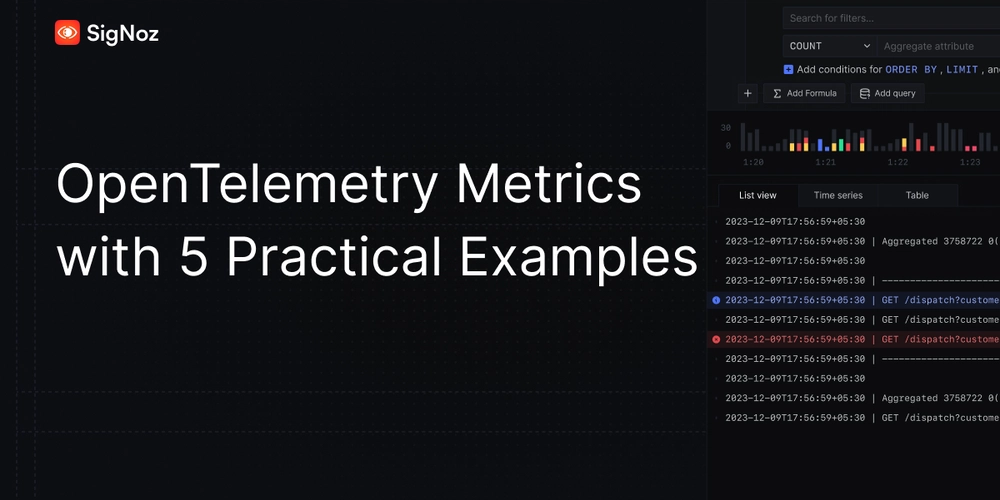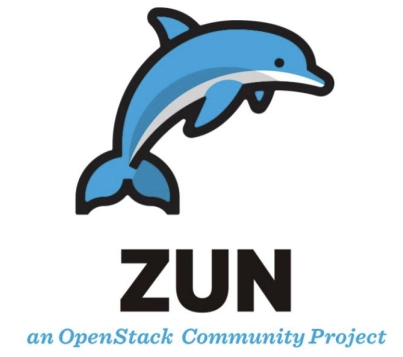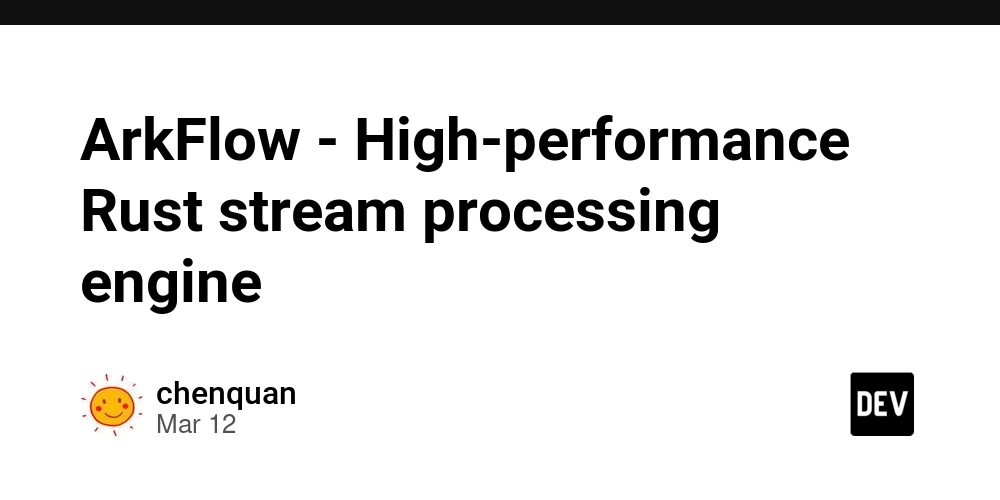Polyglot Programming in Cipher Horizon: Leveraging Multiple Languages for Microservice Excellence
In building the Cipher Horizon ecosystem, we embraced a polyglot programming approach, selecting the most suitable programming languages and frameworks for each microservice's specific requirements. This post explores our language choices, the rationale behind them, and how we maintained cohesion across a diverse technical stack. The Power of Polyglot Architecture Core Services Distribution 1. High-Performance Data Processing with Rust Our data processing services, requiring maximum performance and memory safety, were implemented in Rust: #[derive(Debug, Serialize, Deserialize)] struct DataPacket { id: String, payload: Vec, timestamp: DateTime, } #[tokio::main] async fn process_data_stream(mut stream: impl Stream) { while let Some(packet) = stream.next().await { let processed = tokio::spawn(async move { // Parallel processing with zero-cost abstractions process_packet(packet).await }); match processed.await { Ok(result) => log::info!("Processed packet: {:?}", result), Err(e) => log::error!("Processing error: {:?}", e), } } } impl DataProcessor { pub fn new(config: ProcessorConfig) -> Self { // Implementation with compile-time guarantees } pub async fn process(&self, data: DataPacket) -> Result { // High-performance processing logic } } 2. User-Facing Services with TypeScript/Node.js For APIs and user-facing services, we chose TypeScript for its type safety and extensive ecosystem: @Controller('api/v1/users') export class UserController { constructor(private readonly userService: UserService) {} @Get(':id') @UseGuards(AuthGuard) async getUser(@Param('id') id: string): Promise { const user = await this.userService.findById(id); return this.userMapper.toResponse(user); } @Post() @ValidateRequest() async createUser(@Body() dto: CreateUserDto): Promise { const user = await this.userService.create(dto); return this.userMapper.toResponse(user); } } // Type-safe domain models interface User { id: string; email: string; profile: UserProfile; preferences: UserPreferences; } // Dependency injection and decorators for clean architecture @Injectable() export class UserService { constructor( @Inject('UserRepository') private readonly repository: Repository, private readonly eventBus: EventBus ) {} } 3. Analytics Engine with Python For data analysis and machine learning capabilities, Python was our natural choice: from dataclasses import dataclass from typing import List, Optional import pandas as pd import numpy as np @dataclass class AnalyticsResult: metric_name: str value: float confidence: float timestamp: datetime class AnalyticsEngine: def __init__(self, config: AnalyticsConfig): self.model = self._initialize_model(config) self.preprocessor = DataPreprocessor() async def process_batch(self, data: pd.DataFrame) -> List[AnalyticsResult]: try: processed_data = self.preprocessor.transform(data) results = await self._analyze(processed_data) return [AnalyticsResult(**r) for r in results] except Exception as e: logger.error(f"Analytics processing error: {e}") raise AnalyticsProcessingError(str(e)) @cached_property def model_metrics(self) -> Dict[str, float]: return self._calculate_model_metrics() 4. Background Workers with Go For background processing and system tasks, we leveraged Go's excellent concurrency model: type Worker struct { queue chan Job done chan bool wg sync.WaitGroup ctx context.Context cancel context.CancelFunc } func NewWorker(ctx context.Context) *Worker { ctx, cancel := context.WithCancel(ctx) return &Worker{ queue: make(chan Job, 100), done: make(chan bool), ctx: ctx, cancel: cancel, } } func (w *Worker) Start() { go func() { for { select { case job := None: try: event_type = event['type'] handler = self.get_handler(event_type) await handler.handle(event['payload']) except Exception as e: await self.dead_letter_queue.push(event) Development and Testing Strategy 1. Language-Specific Testing Frameworks // Rust Tests #[cfg(test)] mod tests { use super::*; #[tokio::test] async fn test_data_processing() { let processor = DataProcessor::new(test_config()); let result = processor.process(test_data()).await; assert!(result.is_ok()); } } // TypeScript Tests describe('UserService', () => { it('should create user successfully', async () => { const result = a

In building the Cipher Horizon ecosystem, we embraced a polyglot programming approach, selecting the most suitable programming languages and frameworks for each microservice's specific requirements. This post explores our language choices, the rationale behind them, and how we maintained cohesion across a diverse technical stack.
The Power of Polyglot Architecture
Core Services Distribution
1. High-Performance Data Processing with Rust
Our data processing services, requiring maximum performance and memory safety, were implemented in Rust:
#[derive(Debug, Serialize, Deserialize)]
struct DataPacket {
id: String,
payload: Vec<u8>,
timestamp: DateTime<Utc>,
}
#[tokio::main]
async fn process_data_stream(mut stream: impl Stream<Item = DataPacket>) {
while let Some(packet) = stream.next().await {
let processed = tokio::spawn(async move {
// Parallel processing with zero-cost abstractions
process_packet(packet).await
});
match processed.await {
Ok(result) => log::info!("Processed packet: {:?}", result),
Err(e) => log::error!("Processing error: {:?}", e),
}
}
}
impl DataProcessor {
pub fn new(config: ProcessorConfig) -> Self {
// Implementation with compile-time guarantees
}
pub async fn process(&self, data: DataPacket) -> Result<ProcessedData, ProcessError> {
// High-performance processing logic
}
}
2. User-Facing Services with TypeScript/Node.js
For APIs and user-facing services, we chose TypeScript for its type safety and extensive ecosystem:
@Controller('api/v1/users')
export class UserController {
constructor(private readonly userService: UserService) {}
@Get(':id')
@UseGuards(AuthGuard)
async getUser(@Param('id') id: string): Promise<UserResponse> {
const user = await this.userService.findById(id);
return this.userMapper.toResponse(user);
}
@Post()
@ValidateRequest()
async createUser(@Body() dto: CreateUserDto): Promise<UserResponse> {
const user = await this.userService.create(dto);
return this.userMapper.toResponse(user);
}
}
// Type-safe domain models
interface User {
id: string;
email: string;
profile: UserProfile;
preferences: UserPreferences;
}
// Dependency injection and decorators for clean architecture
@Injectable()
export class UserService {
constructor(
@Inject('UserRepository')
private readonly repository: Repository<User>,
private readonly eventBus: EventBus
) {}
}
3. Analytics Engine with Python
For data analysis and machine learning capabilities, Python was our natural choice:
from dataclasses import dataclass
from typing import List, Optional
import pandas as pd
import numpy as np
@dataclass
class AnalyticsResult:
metric_name: str
value: float
confidence: float
timestamp: datetime
class AnalyticsEngine:
def __init__(self, config: AnalyticsConfig):
self.model = self._initialize_model(config)
self.preprocessor = DataPreprocessor()
async def process_batch(self, data: pd.DataFrame) -> List[AnalyticsResult]:
try:
processed_data = self.preprocessor.transform(data)
results = await self._analyze(processed_data)
return [AnalyticsResult(**r) for r in results]
except Exception as e:
logger.error(f"Analytics processing error: {e}")
raise AnalyticsProcessingError(str(e))
@cached_property
def model_metrics(self) -> Dict[str, float]:
return self._calculate_model_metrics()
4. Background Workers with Go
For background processing and system tasks, we leveraged Go's excellent concurrency model:
type Worker struct {
queue chan Job
done chan bool
wg sync.WaitGroup
ctx context.Context
cancel context.CancelFunc
}
func NewWorker(ctx context.Context) *Worker {
ctx, cancel := context.WithCancel(ctx)
return &Worker{
queue: make(chan Job, 100),
done: make(chan bool),
ctx: ctx,
cancel: cancel,
}
}
func (w *Worker) Start() {
go func() {
for {
select {
case job := <-w.queue:
w.wg.Add(1)
go func(j Job) {
defer w.wg.Done()
if err := j.Process(); err != nil {
log.Printf("Error processing job: %v", err)
}
}(job)
case <-w.ctx.Done():
return
}
}
}()
}
Inter-Service Communication
To maintain consistency across our polyglot architecture, we implemented:
1. Protocol Buffers for Service Contracts
syntax = "proto3";
package cipher.horizon.v1;
service DataProcessor {
rpc ProcessData (ProcessRequest) returns (ProcessResponse);
rpc StreamData (stream DataChunk) returns (stream ProcessedChunk);
}
message ProcessRequest {
string request_id = 1;
bytes payload = 2;
map<string, string> metadata = 3;
}
2. Event Bus Integration
// TypeScript Event Publisher
class EventPublisher {
async publish<T extends Event>(event: T): Promise<void> {
const message = this.serialize(event);
await this.broker.publish('events', message);
}
}
// Python Event Consumer
class EventConsumer:
async def consume(self, event: Dict[str, Any]) -> None:
try:
event_type = event['type']
handler = self.get_handler(event_type)
await handler.handle(event['payload'])
except Exception as e:
await self.dead_letter_queue.push(event)
Development and Testing Strategy
1. Language-Specific Testing Frameworks
// Rust Tests
#[cfg(test)]
mod tests {
use super::*;
#[tokio::test]
async fn test_data_processing() {
let processor = DataProcessor::new(test_config());
let result = processor.process(test_data()).await;
assert!(result.is_ok());
}
}
// TypeScript Tests
describe('UserService', () => {
it('should create user successfully', async () => {
const result = await userService.create(mockUserDto);
expect(result).toMatchObject(expectedUser);
});
});
2. Cross-Language Integration Tests
class IntegrationTest:
async def test_end_to_end_flow(self):
# Initialize services in different languages
rust_processor = await RustProcessorClient.connect()
node_api = await NodeApiClient.connect()
# Test cross-service communication
result = await self.execute_test_scenario(
rust_processor,
node_api
)
assert result.status == 'success'
Deployment and Monitoring
We unified our deployment process using Kubernetes, with language-specific optimizations:
# Rust service deployment
apiVersion: apps/v1
kind: Deployment
metadata:
name: data-processor
spec:
template:
spec:
containers:
- name: processor
image: cipher-horizon/processor:latest
resources:
limits:
memory: "512Mi"
cpu: "500m"
# Node.js service deployment
apiVersion: apps/v1
kind: Deployment
metadata:
name: api-service
spec:
template:
spec:
containers:
- name: api
image: cipher-horizon/api:latest
env:
- name: NODE_ENV
value: "production"
Lessons Learned
-
Language Selection Criteria:
- Performance requirements
- Team expertise
- Ecosystem maturity
- Maintenance overhead
-
Integration Challenges:
- Standardized communication protocols
- Consistent error handling
- Cross-language debugging
-
Best Practices:
- Strong typing across languages
- Consistent logging and monitoring
- Automated testing at all levels
Conclusion
Our polyglot approach in Cipher Horizon has proven that choosing the right tool for each job, while maintaining system cohesion, leads to optimal performance and maintainability. The key is not just in selecting languages, but in creating a harmonious ecosystem where they can work together effectively.
Next in our series, we'll explore how we handle data consistency and transaction management across these diverse services. Stay tuned!
What's your experience with polyglot architectures? Have you faced similar challenges or found different solutions? Share your thoughts in the comments below!










































































































































































![[The AI Show Episode 142]: ChatGPT’s New Image Generator, Studio Ghibli Craze and Backlash, Gemini 2.5, OpenAI Academy, 4o Updates, Vibe Marketing & xAI Acquires X](https://www.marketingaiinstitute.com/hubfs/ep%20142%20cover.png)



























































































































![[DEALS] The Premium Learn to Code Certification Bundle (97% off) & Other Deals Up To 98% Off – Offers End Soon!](https://www.javacodegeeks.com/wp-content/uploads/2012/12/jcg-logo.jpg)


![From drop-out to software architect with Jason Lengstorf [Podcast #167]](https://cdn.hashnode.com/res/hashnode/image/upload/v1743796461357/f3d19cd7-e6f5-4d7c-8bfc-eb974bc8da68.png?#)








































































































.png?#)





.jpg?#)
















![iPhone 17 Pro Won't Feature Two-Toned Back [Gurman]](https://www.iclarified.com/images/news/96944/96944/96944-640.jpg)












_Christophe_Coat_Alamy.jpg?#)
 (1).webp?#)





































































































![Tariffs Threaten Apple's $999 iPhone Price Point in the U.S. [Gurman]](https://www.iclarified.com/images/news/96943/96943/96943-640.jpg)








































































































































